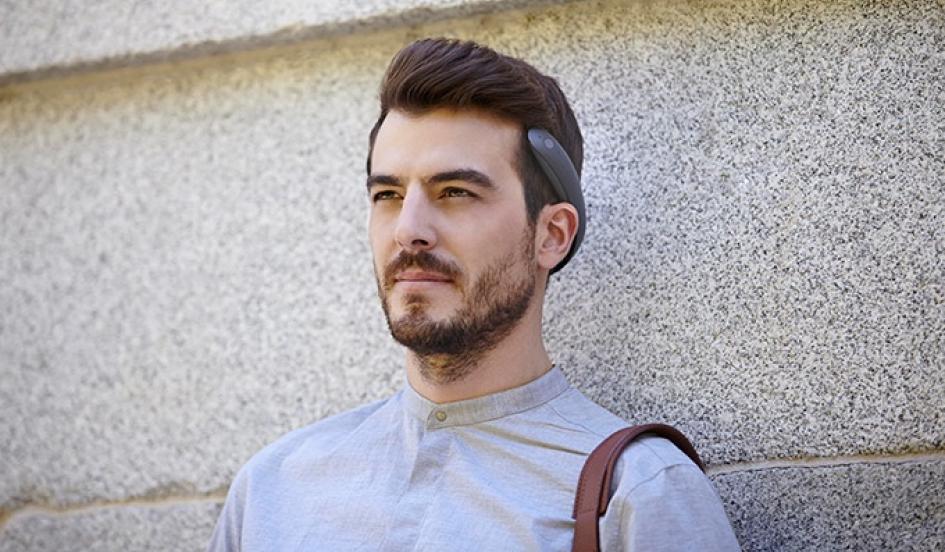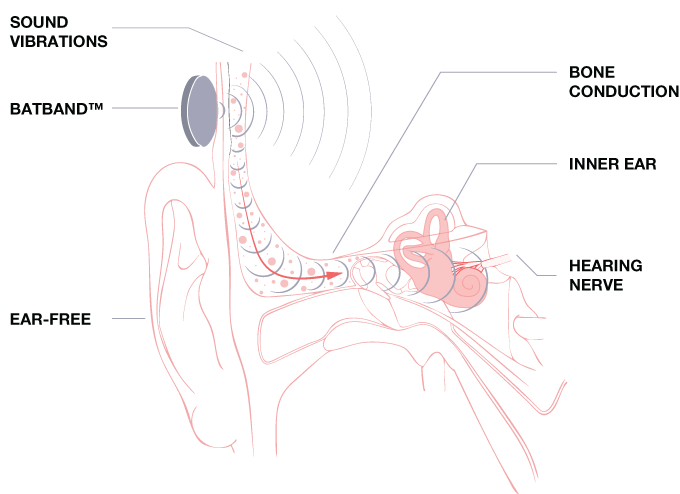
According to its designers, the device allows wearers to listen to music without using earphones.
Tangled headphone cables and having to listen to other people's poor music choice through their shoddy earphones are two perennial problems facing busy commuters. Now, a design company claims to have solved these first-world woes, by creating a device that plays music through your skull instead.
Design company Studio Banana Things, which has offices in Lausanne, London and Madrid, launched a
funding page for the device—called the Batband—on
crowdfunding site Kickstarter. Ten days in, they have raised more than $250,000, smashing their $150,000 goal.
The Batband, which is available for preorder at 95.00 ($149), sits around the back of the wearer's head and has no earphones. Instead, three transducersone either side of the head and one at the backemit sound waves that are conducted via the skull into the inner ear. The device can be paired with a smartphone or music player via Bluetooth and has touch sensors that allow wearers to take calls or change tracks.
According to the designers, it has the added benefit of transmitting sound waves directly to your inner ear, while your outer ear is left undisturbed. This means that you could theoretically be listening to music with your inner ear while participating in a conversation using your outer ear. The designers also say the device is so discreet that music or conversations played through it are practically inaudible to outsiders.

The device works by transmitting sound waves to the inner ear via the user's skull.
The device's design utilizes the fact that we can hear sounds in
two distinct ways. In the normal method of hearing, sound waves are transmitted via air and travel through several structures in the earbeginning with the outer ear and moving down the ear canalcausing the eardrum to vibrate. The vibration is in turn transmitted to three small bones attached to the eardrum, and from there to the cochlea, a sensory organ that translates sound waves into nerve impulses that are sent to the brain. In the second method, sound waves are transmitted via bonethe skull vibrates and the waves are transmitted to the cochlea, which again sends them to the brain where they are deciphered.
The product has been in development since January 2014 and the design team hope to start full scale production in December, with first shipments beginning in April 2016.
Bone conduction headphones have been sold commercially before by firms such as
Aftershokz and have practical benefits such as allowing cyclists to hear traffic while also listening to music. In 2013, a
German firm trialled playing audio adverts on trains that travellers heard as they rested their heads against the train window, while one of the U.S. Navy Seals involved in the mission that killed Osama bin Laden wrote in a memoir that
bone-conduction technology was used in the mission.
The technology has been endorsed by the Audiology Foundation of America, CNN reported, which said that it causes less ear damage than ear buds.


Reader Comments
What could go wrong here!
I could use this as a hearing aid as long as it had a good mic on it.